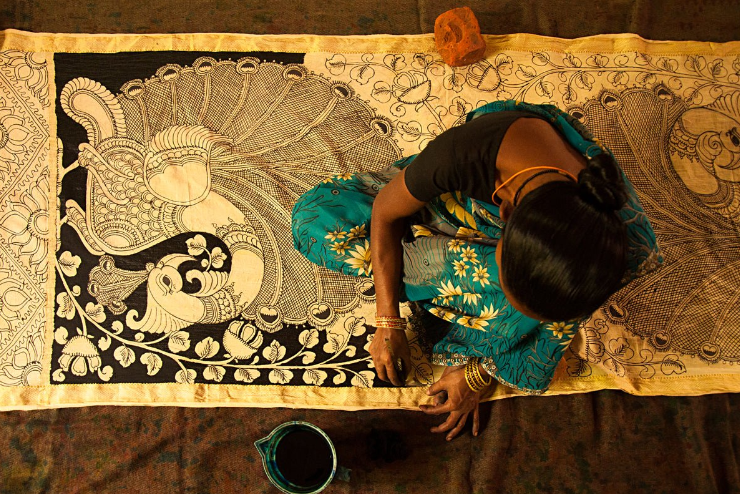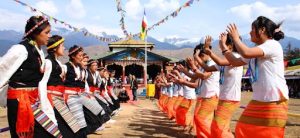
Kalankari is a soft cloth with colorful designs in front of the eyes. After that, Bandar and Srikalahasti, also known as Kalankari, come to mind. These towns gave life to the art of kalankari along with spreading spirituality. Kalankari is a specialty of dyeing traditional artworks with colors made from naturally occurring tree barks, roots and nuts. Kalankari artists bring life to many images using only organic colors. Many families in Machilipatnam, Pedana and Srikalahasti depend on Kalamkari art for their livelihood. Kalankari garments are in good demand not only domestically but also internationally. Cotton cloth is first washed in the manufacture of kalankari cloths. Then the karakkaya is powdered and mixed with milk and applied to clothes. After that it is dried well. After drying completely, colors are applied to wooden blocks with different designs on them. A subsidiary industry continues to be the manufacture of wooden blocks of designs specially designed for Kalankari. The great art is to dip these wooden blocks in organic dyes and print them on kalankari cloth. Marking with charcoal how the art should be. Later black writing is done with kasimi made of jaggery and iron pieces. Add alum and then wash again. After that they are boiled again, soaked in milk and dried after which natural colors are applied to them. Kalankari dyes use only natural raw materials. Artists make their own colors. All colors are based on four colors. When they are ready, the rest of the colors are brought out by mixing them.






